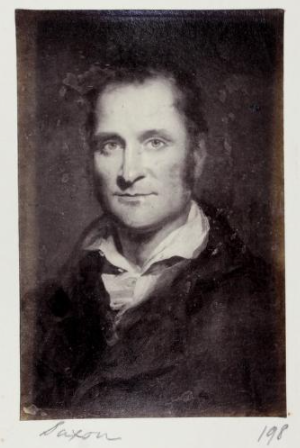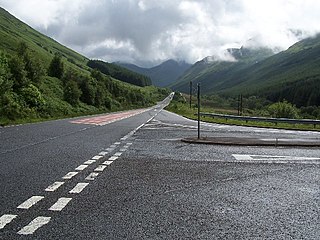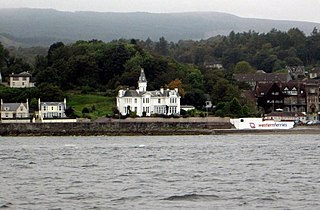
Argyll and Bute is one of 32 unitary council areas in Scotland and a lieutenancy area. The current lord-lieutenant for Argyll and Bute is Jane Margaret MacLeod. The administrative centre for the council area is in Lochgilphead at Kilmory Castle, a 19th-century Gothic Revival building and estate. The current council leader is Robin Currie, a councillor for Kintyre and the Islands.

Dunoon is the main town on the Cowal peninsula in the south of Argyll and Bute, Scotland. It is located on the western shore of the upper Firth of Clyde, to the south of the Holy Loch and to the north of Innellan. As well as forming part of the council area of Argyll and Bute, Dunoon also has its own community council. Dunoon was a burgh until 1976.

Cowal is a peninsula in Argyll and Bute, in the west of Scotland, that extends into the Firth of Clyde.

Ardrishaig is a coastal village on Loch Gilp, at the southern (eastern) entrance to the Crinan Canal in Argyll and Bute in the west of Scotland. It lies immediately to the south of Lochgilphead, with the nearest larger town being Oban.

David Hamilton was a Scottish architect based in Glasgow. He has been called the "father of the profession" in Glasgow.

Ford is a small village at the southern end of Loch Awe in Argyll, Scotland. The village originated as a stopping point on the drove route to Inveraray. The Ford Hotel dates back to 1864, and was probably erected on the site of the old change house. Today it is a guest house and is a listed building.

Toward Point Lighthouse is on the southern extremity of the Cowal Peninsula, near the village of Toward, Argyll and Bute, Scotland. There has been a lighthouse here since 1812.

Carrick Castle is a 14th-century tower house on the west shore of Loch Goil on the Cowal peninsula in Argyll and Bute, Scotland. It is located between Cuilmuich and Carrick, 4 miles (6.4 km) south of Lochgoilhead.

The A815 is a major road located in Argyll and Bute, Scotland. It runs for about 37 miles (60 km) from the A83, near Cairndow, in the north to Toward in the south. It passes beside three lochs, while its final stretch is along the Firth of Clyde.
Headland Archaeology Ltd is a wholly owned subsidiary of the RSK Group. Headland provides archaeological services and heritage advice to the construction industry.

Oban is a resort town within the Argyll and Bute council area of Scotland. Despite its small size, it is the largest town between Helensburgh and Fort William. During the tourist season, the town can have a temporary population of up to over 24,000 people. Oban occupies a setting in the Firth of Lorn. The bay forms a near perfect horseshoe, protected by the island of Kerrera; and beyond Kerrera, the Isle of Mull. To the north, is the long low island of Lismore and the mountains of Morvern and Ardgour.

Ascog House is a large 17th-century mansion house at Ascog on the Isle of Bute, southwest Scotland. The house is in the care of the Landmark Trust, and is protected as a category B listed building. Balmory Hall lies just to the west of the house.

New Castle Lachlan, is an 18th-century baronial mansion or country house located at Strathlachlan, Cowal peninsula, Argyll and Bute, Scotland. It was built in 1790 by Donald Maclachlan, 19th laird, to replace the 15th century Old Castle Lachlan, which stands nearby on the shores of Loch Fyne. The building is protected as a category C listed building.
John Douglas of Pinkerton was a Scottish architect who designed and reformed several country houses in the Scottish Lowlands. His work deserves to be noted for what the 2002 history of Scottish architecture remarks as an approach "of relentless surgery or concealment.". His most notable works are Killin and Ardeonaig Church, Stirlingshire (1744); Archerfield House, East Lothian (1745); Finlaystone House, Renfewshire (1746–47), Wardhouse (Gordonhall), Insch, Aberdeenshire (1757); and Campbeltown Town Hall, Argyll and Bute (1758–60). Several of these are listed buildings.

Polphail was a ghost village in Scotland. It was demolished in 2016.

Carrick Castle is a village on the western shore of Loch Goil, 7 km south of Lochgoilhead by a minor road along the loch shore, on the Cowal peninsula in Argyll and Bute, Scotland. It is within the Argyll Forest Park, and also within the Loch Lomond and The Trossachs National Park.

Argyll and Bute Hospital is a mental health facility in Lochgilphead, Scotland. The original building is a Grade C listed building. The hospital is managed by NHS Highland.

Hunters Quay Hotel is a hotel located on Marine Parade in Hunters Quay, Argyll and Bute, Scotland. It is a Category C listed building, built around 1870. It sits a few feet to the south of the Royal Marine Hotel.

Dunoon Pier is a Victorian pier in the Scottish town of Dunoon, Argyll and Bute, Scotland. The pier is currently owned by Argyll and Bute Council. Completed in its current form in 1898, and reaching out into the Firth of Clyde, its earliest parts date back to 1835. It is now a Category A listed structure and, according to Historic Environment Scotland, the best surviving example of a timber ferry pier in Scotland.



















